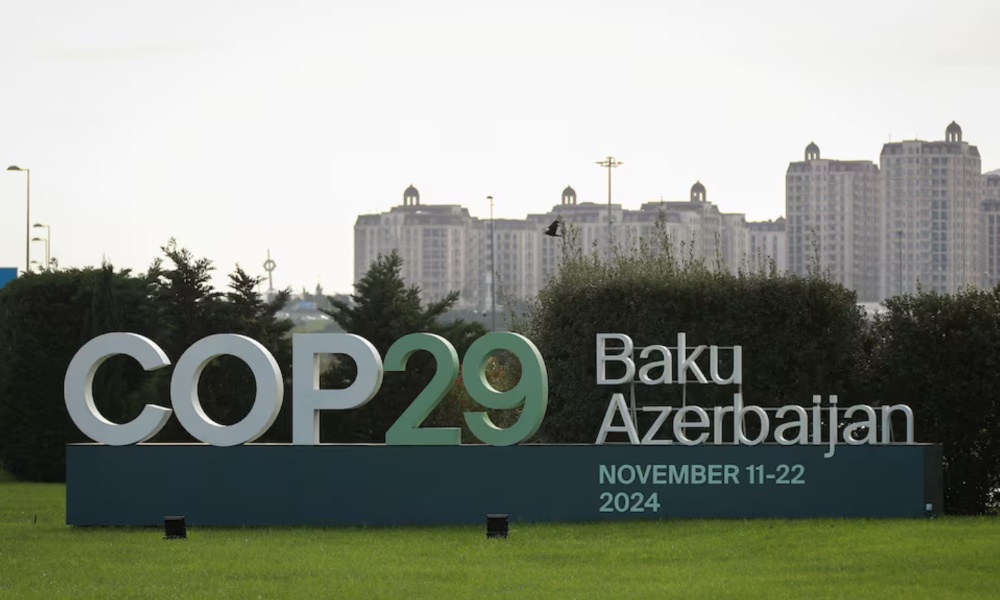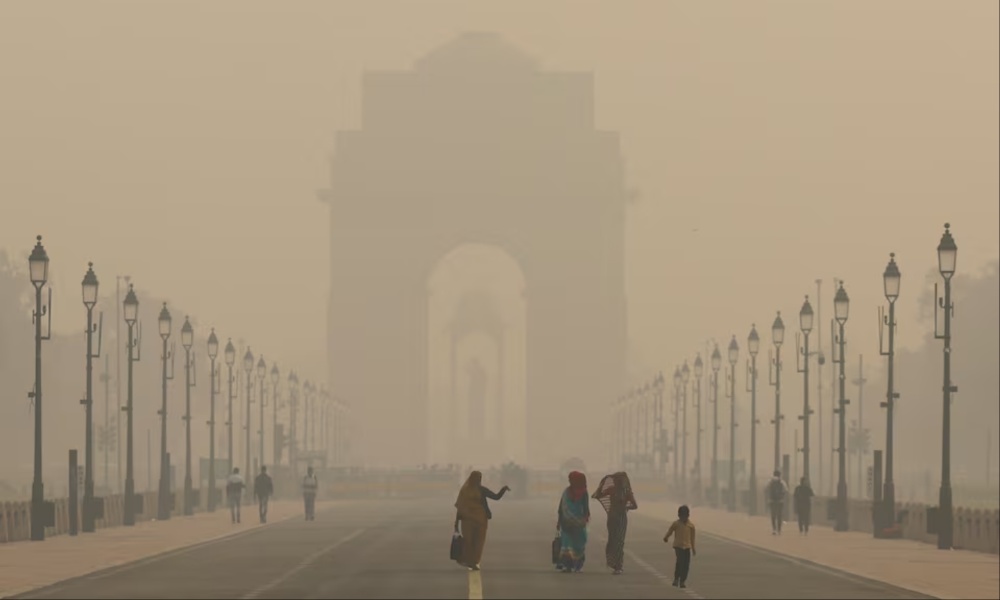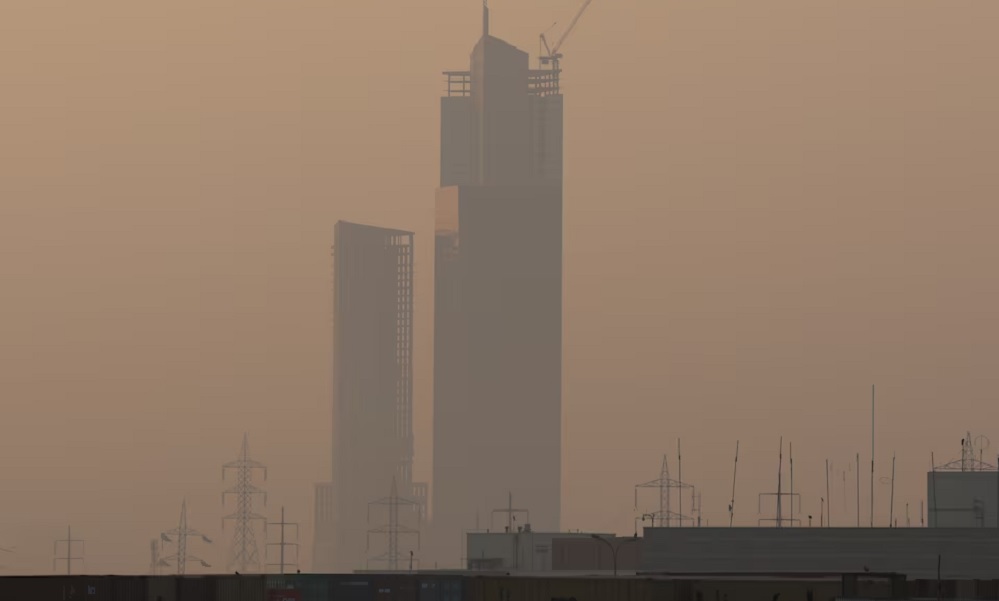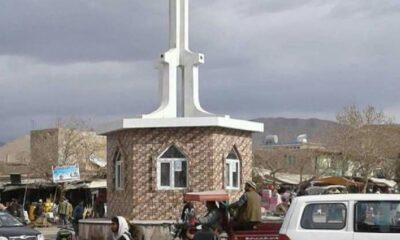Climate Change
Protecting 1.2% of Earth would prevent most extinctions, study says
Russia is the single country with the most high-valued area ripe for conservation with 138,436 square km identified in the study, an area the size of Greece.

Setting aside an additional 1.2% of the world's land as nature preserves would prevent the majority of predicted plant and animal extinctions and cost about $263 billion, according to a study published on Tuesday.
The world is racing to meet a goal to protect 30% of the world by 2030 to protect wildlife that is being decimated by climate change, pollution and habitat destruction.
Global policymakers will meet at a United Nations summit in Colombia in October to discuss plans for reaching that goal.
The study in the journal Frontiers in Science aimed to identify the highest value areas in hope that they be included in those protection plans, said Carlos Peres, a study co-author and conservation ecology expert at the University of East Anglia in the United Kingdom.
"Most countries do not actually have a strategy," Peres said.
"The 30-by-30 targets still lack a lot of details because it doesn't actually say what 30 percent should be protected."
The study's proposed protections would cover an additional 1.6 million square km (633,000 square miles) - an area about a fifth the size of the United States - across 16,825 sites globally that are home to rare and threatened species.
That's on top of the nearly 16% of the world that already have some level of protection.
The study estimated the $263 billion bill is how much it would cost to acquire the new areas, many of which include private property, at current value over the next five years.
"Time is not on our side because it will become increasingly more expensive and more difficult to set aside additional protected areas," Peres said.
Land acquisition makes up most of the cost of creating protected areas, and the study did not consider the upkeep costs for policing the reserves.
About three-quarters of the sites are tropical forests, as those are the world's most biodiverse ecosystems. The Phillipines, Brazil and Indonesia are home to more than half of the high-value sites.
Russia is the single country with the most high-valued area ripe for conservation with 138,436 square km identified in the study, an area the size of Greece.
Several African countries also topped the list with Madagascar having the fourth-highest number of sites overall while the Democratic Republic of Congo had the largest area targeted for conservation on the continent.
The United States is the only developed nation among the top 30 countries in the analysis, with 0.6% of the sites or an area twice the size of Delaware.
The researchers only considered land and freshwater ecosystems but not oceans or marine protected areas. Researchers did not include invertebrates in the study, as the geographical distributions insects and other such animals are not well mapped.
Climate Change
COP29 climate talks: What is needed for a deal by Friday’s deadline?
The talks, which began on Nov. 11, are due to end on Friday at 2pm but COP summits have a history of running long,

Marathon COP29 climate talks enter their final stretch on Wednesday when the Azerbaijani hosts are due to publish an update on negotiations so far as the summit seeks to agree a new goal on issues including climate finance.
The talks, which began on Nov. 11, are due to end on Friday afternoon but COP summits have a history of running long, Reuters reported.
Below is a breakdown of the known sticking points and what happens next:
DRAFT TEXTS
Officials spent the first week trying to agree to deals across a range of different issues including finance, carbon markets, the future of fossil fuels and efforts to mitigate the rise in global temperatures.
Now, the outstanding items have been handed over to ministers so they can use their political clout to try to get agreements across the line.
The next steps are about trying to whittle down draft texts containing a huge range of wording options into a final document that can be adopted by consensus at the end of the summit.
Draft texts will be published periodically by the Azerbaijani presidency as they zero in on an acceptable deal.
CLIMATE FINANCE GOAL
The primary aim of COP29 is to agree a new target for how much money should be provided to developing countries to help them adapt to climate-fuelled weather disasters and transition to cleaner energy systems.
A previous goal to provide $100 billion per year expires in 2025. The new goal needs to be $1 trillion annually by the end of the decade, according to experts.
The focus in the negotiating rooms has been on defining the structure of a new target, including what counts as climate finance and who needs to pay in. Only once that is agreed are parties expected to start talking about the size of the target.
Issues to iron out include whether countries such as China should be counted among the richer core donors, and the degree to which countries should provide finance in the form of grants or loans.
A text has been scheduled for publication on Wednesday evening.
FOSSIL FUELS
Countries have so far struggled to agree on the right way to follow up on a deal at last year's summit to transition from fossil fuels.
European states want to see that commitment referenced throughout any deal at Baku to reinforce the importance of following through with firm action. Others, including the Arab Group of states, argue it does not need to be.
If past COPs are anything to go by, the moment any deal text is published, delegates will be searching for the phrase "fossil fuels" to see if there is any sign of backsliding.
CARBON MARKETS
Talks in Baku began with an early deal on some of the quality standards that would govern a global market for carbon credits, but there is still much to be agreed on, including how to track trades and disclosure rules.
If fully agreed, market watchers expect a U.N.-backed global market could fund billions of dollars of projects that reduce greenhouse gas emissions from projects such as reforestation.
Scrutiny of the details is intense amid concern that without watertight regulation carbon credits may not deliver the benefits they claim.
FINAL HOURS
COPs rarely finish on time. COP28 in Dubai closed almost a full day after the initial deadline; COP27 in Egypt overran by around 36 hours.
In the final hours, delegations consult intensively in private with the presidency on the proposed deal, often through the night, in search of something that can be adopted by consensus.
Once finalised, every country is called to the main hall to begin an hours-long process of formal approval.
Climate Change
Toxic smog persists over India’s north; Delhi pollution remains severe
India battles air pollution every winter as cold, heavy air traps dust, emissions, and smoke from farm fires started illegally in the adjoining, farming states of Punjab and Haryana

Residents in India's northern states woke up to another day of poor air quality on Tuesday, as a layer of dense fog shrouded most of the region, and pollution in the capital Delhi remained severe.
India battles air pollution every winter as cold, heavy air traps dust, emissions, and smoke from farm fires started illegally in the adjoining, farming states of Punjab and Haryana.
The air quality index (AQI) touched a peak of 491 in Delhi on Monday, forcing the government to introduce restrictions on vehicle movement and construction activities, and schools to conduct classes online.
On Tuesday, Delhi's 24-hour air quality index (AQI) reading was at 488 on a scale of 500, India's Central Pollution Control Board (CPCB) said, and at least five stations in the capital reported an AQI of 500, Retuers reported.
CPCB defines an AQI reading of 0-50 as "good" and above 401 as "severe", which it says is a risk to healthy people and "seriously impacts" those with existing diseases.
Swiss group IQAir ranked New Delhi as the world's most polluted city with air quality at a "hazardous" 489, although that was a significant improvement from Monday's 1,081 reading.
Experts say the scores vary because of a difference in the scale countries adopt to convert pollutant concentrations into AQI, and so the same quantity of a specific pollutant may be translated as different AQI scores in different countries.
India's weather department said a shift in the fog layer towards the northern state of Uttar Pradesh had helped improve visibility over Delhi.
Visibility dropped to zero metres in Uttar Pradesh's capital Agra, which lies southeast of Delhi. The Taj Mahal, India's famed monument of love, has been obscured by toxic smog for nearly a week.
The strict measures to mitigate the impact of high pollution have hurt production at more than 3.4 million micro, small and medium enterprises in the nearby states of Punjab, Haryana and Delhi, local media reported.
Climate Change
Pakistan’s Punjab shuts construction and schools, and lockdown looms to fight smog

Pakistan's Punjab declared a health emergency due to toxic smog on Friday, banning construction, shutting schools for another week and moving universities online, with a three-day lockdown possible, the province's senior minister said on Friday.
Punjab battles toxic smog every winter as cold air traps dust, emissions, and smoke from illegal stubble burning on fields. Air quality has deteriorated drastically in recent weeks and the province's capital Lahore currently ranks as the world's most polluted city, says IQAir.
"A complete lockdown will be enforced on Friday, Saturday, and Sunday (next week) if the situation does not improve by Wednesday," said Punjab Senior Minister Marriyum Aurangzeb, addressing a press conference in Lahore.
Citizens were advised to stay indoors. Air Quality Index (AQI) readings in Lahore reached 637 at 3 p.m. (1000 GMT), according to Swiss group IQAir, significantly higher than levels recommended by the World Health Organization.
The government had ordered the closure of construction, brick kilns, and furnace-based plants in Lahore and the city of Multan, the minister said.
Punjab's government had last week ordered schools to close until Nov. 17, and on Friday the shift to online learning was extended for another week. Colleges and universities will also shut down, moving to virtual classes.
The eastern province has already banned entry to parks, zoos, playgrounds and other public spaces.
South Asia faces severe pollution each year due to trapped dust, emissions and stubble burning - the practice of setting fire to fields after the grain harvest.
Punjab has blamed this year's particularly high pollution levels partly on toxic air flowing from neighbouring India, where air quality has also reached hazardous levels.
India's capital of New Delhi, the world's most polluted capital city, banned all non-essential construction, moved younger children to virtual classrooms and asked residents to avoid using coal and wood from Friday to combat increasing air pollution.
New Delhi's air quality level reached 539 on Friday, according to live rankings by IQAir, the worst amongst global capitals.
-

 Sport5 days ago
Sport5 days agoFIFA unveils Innovative Club World Cup Trophy ahead of new tournament in 2025
-

 Regional5 days ago
Regional5 days agoIndia’s successful test of hypersonic missile puts it among elite group
-

 Latest News5 days ago
Latest News5 days agoTrump team compiling list of military officers responsible for US withdrawal from Afghanistan
-

 Latest News5 days ago
Latest News5 days agoCanada sent 19 failed asylum seekers back to Afghanistan last year
-

 Sport4 days ago
Sport4 days agoAbu Dhabi’s thrilling T10 tournament just days away
-

 World4 days ago
World4 days agoBiden allows Ukraine to use US arms to strike inside Russia
-

 Sport4 days ago
Sport4 days agoAfghanistan beat UAE by 169 runs in U19 tri-series
-

 Business5 days ago
Business5 days agoMullah Baradar inaugurates a blanket factory in Kabul
























